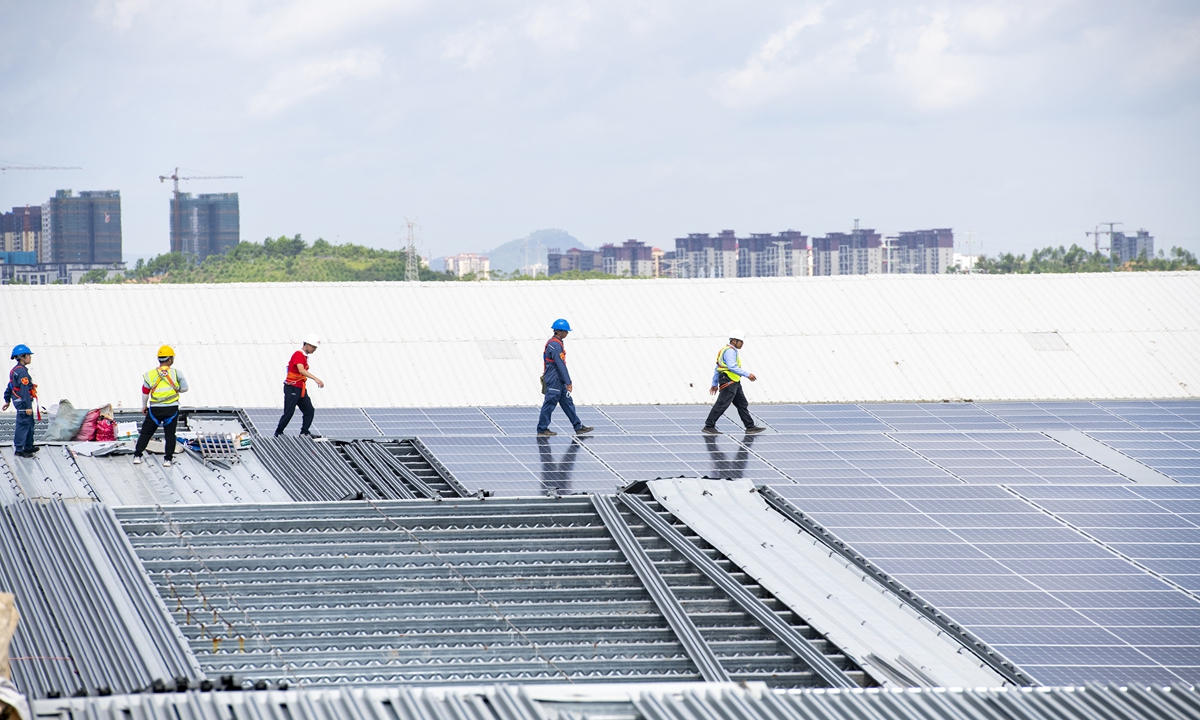On the roofs of factories operated by Zhongzhenweiwang New Energy Co., Ltd. in the eastern Chinese city of Liaocheng, photovoltaic (PV) panels are turning winter sunlight into electricity.
“Early this year, we invested 2.5 million yuan (about 358,000 U.S. dollars) to build an 800-kilowatt PV power generation facility utilizing over 10,000 square meters of factory roofs,” said Sun Zhenliang, director of operations of the company in Shandong Province.
The facility can generate 1,200 megawatt-hours of electricity annually. In addition to supplying power for production and office use, surplus electricity is sold to the power grid, generating an annual income of some 480,000 yuan, Sun added.
“Photovoltaic power generation is a government-supported sunrise industry that is less polluting and has remarkable environmental benefits,” said Zhang Xiaobin, executive deputy director of the Shandong Solar Energy Industry Association, adding that the industry had long faced challenges due to limited choices of construction sites.
However, in recent years, Shandong has actively utilized rooftop resources on sites such as factories and rural residential buildings to promote distributed PV power generation, injecting new momentum into green development.
In New Zhangyanzhai Village of Liaocheng, an 11 megawatt rooftop PV power generation project is in operation.
“As long as the sun is there, you can earn money. Photovoltaic power generation can increase the income of our village by more than 300,000 yuan annually, and the profit period can last up to 20 years,” said Zhang Wei, Party chief of the village.
The growth of distributed PV power generation in Shandong mirrors China’s strenuous efforts to develop new energy.
In November, southwest China’s Tibet Autonomous Region started the construction of a county-level distributed PV power generation project on rooftops, the first of its kind in the region.
According to the Tibet’s five-year plan for 2021 to 2025, the region will accelerate its development of solar PV power, and the total installed capacity in the region is expected to exceed 10 million kilowatts by 2025.
China has fast-tracked its green drive in recent years, bringing a boom in development within the new-energy sector, with a world-leading installed capacity.
By the end of 2021, the country’s annual power generation from wind and solar energy accounted for 11.7 percent of its total electricity consumption.
Furthermore, China has rolled out a raft of measures to significantly move its installed wind and solar power capacity toward a low-carbon, secure and efficient energy mix.
In a national action plan issued in May this year, the country pledged to accelerate its construction of large wind power and photovoltaic bases in deserts, and will in the meantime encourage distributed power generation in villages and industrial parks, and on building rooftops.
By 2025, half of all new public institution buildings will have solar power facilities on their rooftops, it said.
Source : Xinhua News











Add Comment